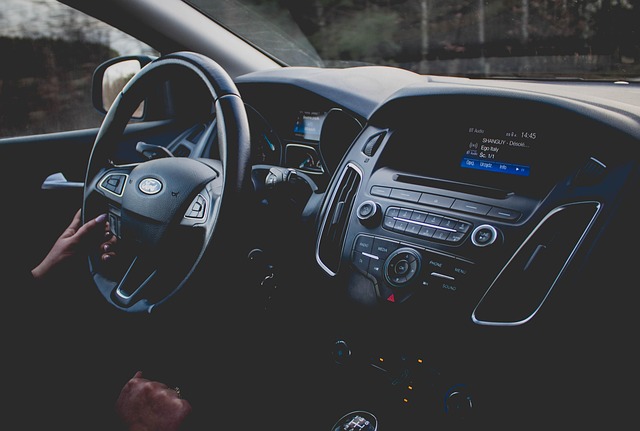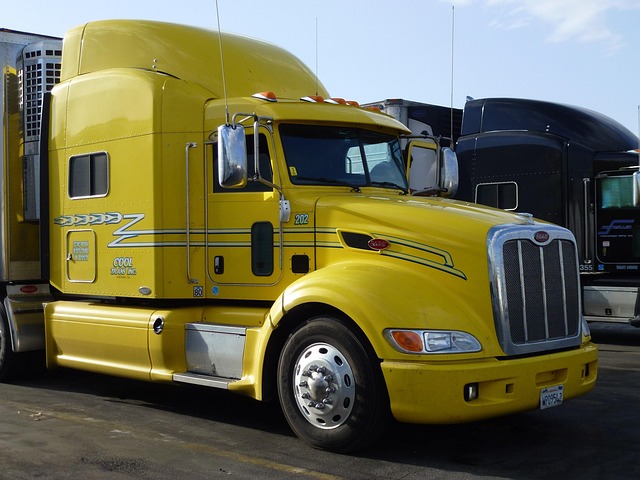Looking to register your car in California? This comprehensive guide breaks down the process step-by-step. From understanding key requirements to gathering essential documents for a successful DMV VIN verification, you’ll learn what’s needed to complete registration online or in-person. Discover how to pay fees and receive your plates, ensuring your vehicle complies with California laws. Follow these simple steps for a smooth car registration experience.
- Understand California Car Registration Requirements
- Gather Necessary Documents for VIN Verification
- Perform DMV Vehicle Identification Number (VIN) Check
- Complete Online or In-Person Registration Process
- Pay Registration Fees and Receive Your Plate
Understand California Car Registration Requirements

Before registering your car in California, it’s crucial to understand the state’s specific requirements for vehicle identification number (VIN) verification. The California Department of Motor Vehicles (DMV) mandates a rigorous process to ensure the accuracy and legitimacy of all vehicles on its roads. This includes conducting a thorough VIN inspection, which checks the vehicle’s history, including any previous accidents or outstanding issues.
A key aspect of this process is the DMV’s reliance on accurate and up-to-date information from manufacturers and authorized dealers. They utilize advanced systems for dmv vin verification, often involving mobile vin inspection services and mobile vin verifiers. These tools allow for real-time cross-referencing of vehicle details, ensuring that the DMV has complete and correct data before issuing a registration.
Gather Necessary Documents for VIN Verification

Before heading to the California DMV for vehicle registration, make sure you have all the essential documents ready. One crucial piece is the Vehicle Identification Number (VIN) verification. This process involves proving that your car’s VIN matches the details in the manufacturer’s records. To facilitate this, you’ll need access to important papers such as the title, registration certificate, and proof of insurance. Additionally, a valid driver’s license or state ID will be required for identification purposes.
For a smoother experience, consider using digital tools like mobile vin verification apps or services that can help with the inspection process. These mobile vin verifiers offer convenient alternatives to traditional methods, allowing you to complete the VIN inspection step efficiently before visiting the DMV.
Perform DMV Vehicle Identification Number (VIN) Check

Before registering your vehicle in California, it’s crucial to perform a DMV Vehicle Identification Number (VIN) check. This step ensures that the car you’re looking to register has no outstanding issues and is safe for road use. The process is straightforward; you can either do this at a local DMV office or opt for a convenient mobile vin inspection. A vin inspection involves verifying key details about your vehicle, such as its history of ownership, accident records, and if it meets California’s safety and emissions standards.
By conducting a thorough VIN verification through the California DMV, you’ll gain peace of mind knowing that your new (or used) car is legally compliant. Additionally, having this check done before registration can help prevent future problems, such as being stopped by law enforcement for an unregistered vehicle or facing difficulties when selling it later on. Consider utilizing mobile vin verification services to save time and effort, as they offer a quick and efficient way to ensure your vehicle’s eligibility for California roads.
Complete Online or In-Person Registration Process

In California, registering a car can be completed either online or in-person at a DMV (Department of Motor Vehicles) office. The process begins with gathering essential documents, including proof of insurance, vehicle ownership, and identity. For added convenience, many residents opt for a mobile vin verifier to facilitate the initial steps, like conducting a DMV vin verification. This involves checking the car’s unique Vehicle Identification Number (VIN) against their records to ensure it’s not stolen or has any outstanding issues.
Once validated, you can proceed with the registration either online through the official DMV website or in-person. During an in-person visit, a representative will guide you through the process, which includes filling out forms and submitting fees. Online registration requires accurately entering the required information and uploading digital copies of necessary documents. Regardless of the method chosen, ensuring accurate data input is crucial to avoid delays.
Pay Registration Fees and Receive Your Plate

After completing your vehicle’s registration application, it’s time to pay the required fees. The California Department of Motor Vehicles (DMV) charges a fee for registering your car, which varies based on the type of vehicle and its age. You can typically pay these fees online, over the phone, or in person at any DMV field office. Once your payment is processed, the DMV will conduct a VIN (Vehicle Identification Number) verification to ensure the vehicle’s authenticity. This process includes cross-referencing the VIN with their records and checking for any outstanding issues or recalls.
Upon successful VIN inspection, the DMV will issue your unique license plate. You can either pick up your plates from a DMV office or, in some cases, have them delivered to you. Ensure that your vehicle is legally registered by displaying these plates prominently on both sides of your car. This completes another crucial step in the registration process, making your vehicle roadworthy and legal to drive in California.
Registering a car in California involves understanding clear requirements, gathering essential documents for VIN verification, completing a straightforward process either online or in person, paying relevant fees, and receiving your personalized license plate. This streamlined procedure ensures that California residents can efficiently maintain their vehicles while adhering to state regulations, facilitated by accurate DMV VIN verification.
